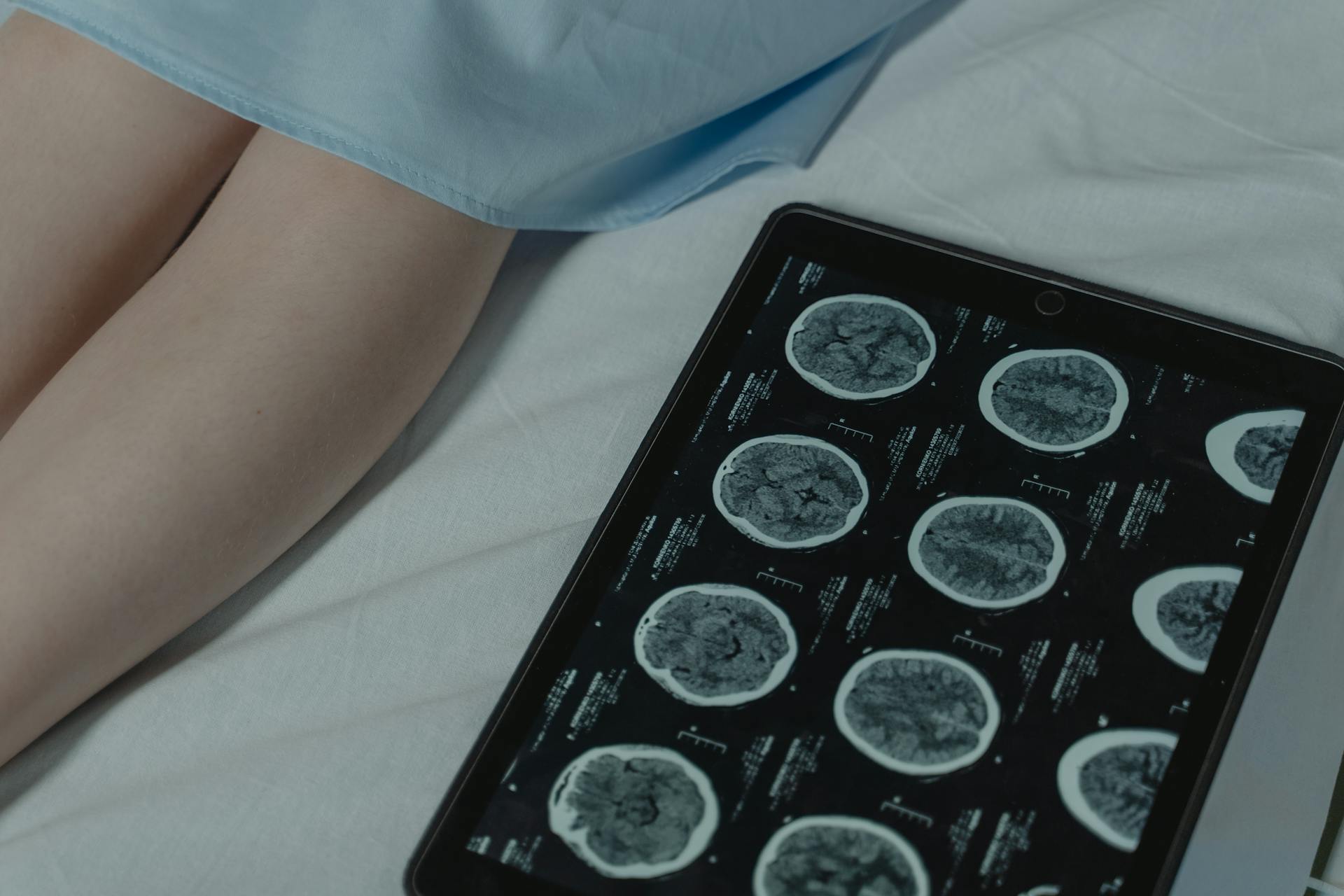
Viêm não tự miễn (AIE) là một bệnh lý thần kinh hiếm gặp và phức tạp với các triệu chứng có thể dao động từ lú lẫn nhẹ đến hôn mê. Do mức độ nghiêm trọng, những người bị ảnh hưởng thường cần được chăm sóc đặc biệt trong thời gian dài.
Nói chuyện với một chuyên gia
Về Trợ cấp đồng thanh toánMay mắn thay, có một số phương pháp điều trị lâu dài cho bệnh viêm não tự miễn. Trong bài viết này, chúng ta sẽ tìm hiểu năm phương pháp điều trị viêm não tự miễn đã được chứng minh hiệu quả qua các nghiên cứu và trên bệnh nhân.
Hiểu về bệnh viêm não tự miễn
Chúng ta hãy bắt đầu với một cái gì đó nhanh chóng hướng dẫn về bệnh viêm não tự miễn. Trong chứng rối loạn tự miễn dịch hiếm gặp này, hệ thống miễn dịch của cơ thể tấn công não, gây viêm và các triệu chứng như:
- Động kinh
- Mất ngủ
- Tê liệt
- Các cơn hoảng loạn
- Ảo giác
- Lo lắng nghiêm trọng
- Suy giảm trí nhớ
- Khó khăn về nhận thức
- Hành vi cưỡng chế
- Các chuyển động không tự nguyện
- Khó khăn về thăng bằng và lời nói
Các triệu chứng có thể khác nhau ở các phân nhóm bệnh khác nhau. Tuy nhiên, nếu không được điều trị, AIE có thể trở nên nguy hiểm và thậm chí dẫn đến hôn mê nặng.
Nguyên nhân gây ra bệnh viêm não tự miễn là gì?
AIE ảnh hưởng đến xung quanh 13 trên 100.000 Cá nhân. Bạn có thể tự hỏi, vì chúng ta đã phát triển các phương pháp điều trị viêm não tự miễn hiệu quả, chúng ta phải biết chính xác nguyên nhân gây ra căn bệnh này. Tuy nhiên, điều đó không đúng trong nhiều trường hợp.
Mặc dù chúng ta có thể không biết nguyên nhân chính xác của căn bệnh trong mọi trường hợp, các nhà khoa học tin rằng nó có thể được kích hoạt bởi:
- Một số loại ung thư
- Sự hiện diện của một khối u gọi là u quái thai
- Tiếp xúc với một số vi khuẩn và vi-rút
Viêm não tự miễn được chẩn đoán như thế nào?
Việc chẩn đoán tình trạng này có thể khó khăn. Đôi khi, bác sĩ nhầm lẫn nó với các bệnh lý thần kinh khác và thậm chí là lạm dụng thuốc.
Tuy nhiên, nếu bạn đến gặp bác sĩ thần kinh khi có dấu hiệu của AIE, họ sẽ thực hiện các xét nghiệm sau để xác nhận bệnh:
- Chụp cộng hưởng từ
- Xét nghiệm máu
- Chọc tủy sống
- Khám thần kinh
Điều trị viêm não tự miễn hiệu quả

Sau khi chẩn đoán, bác sĩ có thể quyết định phương pháp điều trị viêm não tự miễn dài hạn nào là tốt nhất cho bạn. Dưới đây là năm phương pháp điều trị hiệu quả nhất cho AIE.
Nhận hỗ trợ tài chính
1. IVIG
Globulin miễn dịch tiêm tĩnh mạch (IVIG) là liệu pháp đầu tay cho bệnh viêm não tự miễn. Điều trị truyền IVIG bao gồm việc tiêm một liều kháng thể cô đặc được chiết xuất từ huyết tương hiến tặng của người khỏe mạnh cho bệnh nhân AIE.
Cơ chế hoạt động của IVIG dựa vào các kháng thể này. Chúng trung hòa các tự kháng thể gây bệnh và điều chỉnh phản ứng miễn dịch để giảm bớt các triệu chứng. Theo nghiên cứuIVIG là một trong những phương pháp điều trị viêm não tự miễn an toàn và hiệu quả nhất.
Tiêm IVIG cho bệnh viêm não tự miễn
Sau đây là các bước để nhận Liệu pháp IVIG cho bệnh viêm não tự miễn:
- Bệnh nhân sẽ được bác sĩ thần kinh đánh giá kỹ lưỡng.
- Nếu khuyến cáo sử dụng IVIG, bác sĩ sẽ lên lịch truyền dịch.
- IVIG có thể được tiêm tại bệnh viện, trung tâm truyền dịch ngoại trú hoặc tại nhà, dưới sự giám sát của chuyên gia chăm sóc sức khỏe.
- Một y tá được đào tạo sẽ truyền dung dịch đã pha chế qua đường truyền tĩnh mạch.
- Họ sẽ theo dõi các dấu hiệu sinh tồn của người nhận để phát hiện bất kỳ phản ứng bất lợi nào.
- Quá trình điều trị có thể mất từ 1 đến 4 giờ.
- Sau đó, bệnh nhân có thể cảm thấy hơi đau đầu và sốt nhưng sẽ nhanh chóng thuyên giảm.
- Bệnh nhân có thể cần tái khám với bác sĩ để đánh giá hiệu quả của phương pháp điều trị viêm não tự miễn.
2. Lọc huyết tương
Một phương pháp điều trị lâu dài khác cho bệnh viêm não tự miễn là huyết tương tách (trao đổi huyết tương). Kỹ thuật này bao gồm việc loại bỏ và thay thế huyết tương của bệnh nhân để loại bỏ các kháng thể có hại và các chất gây viêm.
Kết quả của quá trình lọc huyết tương cải thiện nhanh chóng các triệu chứng, có thể hữu ích cho những bệnh nhân bị AIE kháng trị nặng.
Quản lý huyết tương thay thế cho bệnh viêm não tự miễn
Tiến hành lọc huyết tương cho bệnh nhân AIE bao gồm các bước sau:
- Bác sĩ sẽ đánh giá kỹ lưỡng từng cá nhân để xác định liệu trao đổi huyết tương có phải là phương pháp điều trị tốt nhất cho họ hay không.
- Bệnh nhân có thể cần nhịn ăn trước khi điều trị viêm não tự miễn. Họ cũng có thể cần dùng thuốc để giảm thiểu tác dụng phụ của phương pháp điều trị.
- Các chuyên gia y tế được đào tạo thường thực hiện phương pháp điều trị này tại bệnh viện.
- Họ sẽ đưa một ống thông tĩnh mạch trung tâm vào tĩnh mạch lớn ở cánh tay, cổ hoặc bẹn.
- Ống thông này sẽ lấy máu ra và đưa máu qua một máy để tách huyết tương.
- Huyết tương có kháng thể có hại sẽ được lọc và huyết tương khỏe mạnh sẽ được đưa trở lại máu của bệnh nhân.
- Sau khi đã trao đổi được lượng huyết tương mong muốn, bác sĩ sẽ tháo ống thông và cho bệnh nhân nghỉ ngơi trong khi theo dõi các dấu hiệu sinh tồn của họ.
3. Rituximab và các kháng thể đơn dòng khác
Rituximab và kháng thể đơn dòng là một trong những phương pháp điều trị viêm não tự miễn hiệu quả nhất. Các liệu pháp nhắm mục tiêu này đặc biệt hiệu quả đối với những bệnh nhân không đáp ứng với các phương pháp điều trị khác.
Các kháng thể đơn dòng này hoạt động bằng cách nhắm vào các thành phần cụ thể của hệ thống miễn dịch (như tế bào B) để kiểm soát các quá trình tự miễn dịch trong não.
Quản lý Rituximab cho bệnh viêm não tự miễn
Việc sử dụng rituximab và các kháng thể đơn dòng khác như phương pháp điều trị lâu dài cho bệnh viêm não tự miễn bao gồm các bước sau:
- Nhà cung cấp dịch vụ chăm sóc sức khỏe sẽ đánh giá bệnh nhân để xác định liệu pháp miễn dịch có mục tiêu có phù hợp hay không.
- Họ sẽ xác định liều lượng rituximab và phác đồ điều trị dựa trên cân nặng và phân nhóm AIE của bệnh nhân.
- Thuốc thường được truyền theo chu kỳ trong vài tuần hoặc vài tháng.
- Bệnh nhân được theo dõi chặt chẽ trong suốt quá trình điều trị viêm não tự miễn để phát hiện tác dụng phụ và tiến triển của bệnh.
- Bệnh nhân sẽ đến tái khám để đánh giá phản ứng của họ với thuốc và điều chỉnh kế hoạch điều trị nếu cần.
Nhận hỗ trợ đồng thanh toán ngay
4. Corticosteroid
Thuốc Corticosteroid chẳng hạn như prednisone và methylprednisolone là những lựa chọn điều trị hiệu quả khi được sử dụng kết hợp với các liệu pháp khác.
Các loại thuốc này hoạt động bằng cách giảm viêm trong não và ức chế phản ứng miễn dịch. Tác dụng này làm giảm các triệu chứng thần kinh ở những người bị ảnh hưởng và cải thiện chất lượng cuộc sống của họ.
Sử dụng Corticosteroid cho bệnh viêm não tự miễn
Sau đây là cách sử dụng corticosteroid cho bệnh nhân AIE:
- Trước khi bắt đầu phương pháp điều trị viêm não tự miễn này, bệnh nhân sẽ được bác sĩ đánh giá toàn diện.
- Bác sĩ sẽ xác định liều lượng và thời gian điều trị phù hợp dựa trên các triệu chứng lâm sàng.
- Họ sẽ kê đơn thuốc corticosteroid cụ thể dựa trên nhu cầu của bệnh nhân.
- Bệnh nhân sẽ được điều trị bằng thuốc dạng viên uống hoặc truyền tĩnh mạch.
- Bác sĩ sẽ theo dõi phản ứng của bệnh nhân với phương pháp điều trị và điều chỉnh liều lượng và thời gian điều trị nếu cần thiết.
- Khi các triệu chứng của bệnh nhân cải thiện, bác sĩ sẽ giảm dần liều lượng và theo dõi bệnh nhân để phòng ngừa tái phát.
5. Phẫu thuật xạ trị định vị
Phương pháp điều trị viêm não tự miễn hiệu quả cuối cùng trong danh sách của chúng tôi là phẫu thuật xạ trị định vịPhương pháp điều trị viêm não tự miễn dài hạn này là một thủ thuật không xâm lấn. Phương pháp này sử dụng liều bức xạ cao để nhắm vào các vùng cụ thể trong não.
Phương pháp điều trị này phù hợp nhất với những bệnh nhân có vùng não khu trú kháng trị với các liệu pháp khác. Xạ trị sẽ làm giảm viêm và kiểm soát các quá trình tự miễn mà không cần phẫu thuật mở.
Phẫu thuật xạ phẫu định vị cho bệnh viêm não tự miễn
Quy trình này được thực hiện cho bệnh nhân AIE theo các bước sau:
- Những người bị ảnh hưởng sẽ được chụp MRI hoặc CT để xác định tổn thương mục tiêu.
- Một nhóm liên ngành gồm các bác sĩ thần kinh, bác sĩ phẫu thuật thần kinh và chuyên gia về bức xạ hợp tác để xác định liệu phẫu thuật xạ trị có phải là phương pháp điều trị phù hợp cho người mắc bệnh viêm não tự miễn hay không.
- Dựa trên kết quả, họ sẽ xây dựng kế hoạch điều trị cho bệnh nhân.
- Họ sử dụng thuật toán máy tính và phần mềm chuyên dụng để lập bản đồ vị trí chính xác của tổn thương và bảo vệ các vùng khỏe mạnh xung quanh.
- Trong phẫu thuật, bệnh nhân nằm trên bàn điều trị và các chuyên gia xạ trị sẽ chiếu tia vào các vùng đã xác định.
- Bệnh nhân có thể cần nhiều buổi điều trị.
- Sau đó, họ được theo dõi các tác dụng phụ và thay đổi về triệu chứng.
Những thách thức trong điều trị bệnh viêm não tự miễn

Mặc dù đã có những tiến bộ trong điều trị viêm não tự miễn, nhưng vẫn còn một số thách thức. Hãy cùng xem xét một số thách thức đó.
Nhận hỗ trợ tài chính
Đối với bệnh viêm não tự miễnChẩn đoán chậm trễ
Một trong những thách thức lớn nhất trong việc điều trị lâu dài bệnh viêm não tự miễn là sự chậm trễ trong chẩn đoán.
Do các triệu chứng của AIE tương tự như các rối loạn thần kinh khác, bác sĩ có thể chẩn đoán nhầm bệnh. Việc chẩn đoán chậm trễ này sẽ dẫn đến các triệu chứng tiến triển và chậm trễ trong việc điều trị thích hợp.
Tác dụng phụ
Một số bệnh nhân có thể gặp tác dụng phụ nghiêm trọng với các phương pháp điều trị hiện tại. Các tác dụng phụ này có thể bao gồm:
- Nhiễm trùng
- Phản ứng dị ứng
- Tổn thương các mô khỏe mạnh
Kháng thuốc điều trị
Trong một số trường hợp, bệnh nhân có thể bị kháng thuốc điều trị viêm não tự miễn. Thuốc sẽ không còn hiệu quả và tình trạng bệnh trở nên không thể kiểm soát.
Sự kháng cự này có thể làm phức tạp thêm các quyết định điều trị, đòi hỏi phải có phương pháp tiếp cận cá nhân hóa hơn.
Tiếp cận Chăm sóc Chuyên khoa và Thuốc men
Thách thức cuối cùng trong điều trị viêm não tự miễn là thiếu sự tiếp cận với dịch vụ chăm sóc và thuốc men chuyên khoa. Nhiều bệnh nhân sống ở những khu vực không có điều kiện tiếp cận với các nhà cung cấp dịch vụ chăm sóc sức khỏe chuyên khoa.
Không có bác sĩ thần kinh hoặc bác sĩ miễn dịch nào ở gần đó để chẩn đoán chính xác. Ngoài ra, họ có thể không được tiếp cận với các loại thuốc chuyên khoa dùng để điều trị AIE.
Đây là một số thách thức chính mà người mắc viêm não tự miễn phải đối mặt. Bằng cách giải quyết những vấn đề này và phát triển các phương pháp điều trị nhắm mục tiêu hơn, chúng ta có thể nâng cao chất lượng chăm sóc cho những người mắc chứng rối loạn thần kinh suy nhược này.
Chống lại bệnh viêm não tự miễn với AmeriPharma® Nhà thuốc chuyên khoa
Viêm não tự miễn không phải là một căn bệnh không thể chữa khỏi. Nếu được bác sĩ chẩn đoán sớm, bạn có thể được điều trị viêm não tự miễn hiệu quả và kiểm soát tình trạng bệnh.
Nếu bạn đang tìm kiếm phương pháp điều trị lâu dài dễ tiếp cận cho bệnh viêm não tự miễn, Nhà thuốc chuyên khoa AmeriPharma® có thể giúp.
Chúng tôi cung cấp dịch vụ tại nhà Liệu pháp IVIG cho những người đang chiến đấu với chứng rối loạn tự miễn dịch này ở hơn 40 tiểu bang và vùng lãnh thổ của Hoa Kỳ. hiệu thuốc chuyên khoa thậm chí có thể cử y tá truyền dịch chuyên khoa đến tận nhà để tiến hành điều trị và giúp bạn khắc phục mọi sự cố.
Liên hệ với chúng tôi bây giờ để nhận được sự chăm sóc đặc biệt tại nhà và quản lý AIE với dịch vụ phối hợp toàn diện, hỗ trợ 24/7/365 và hỗ trợ đồng thanh toán.

